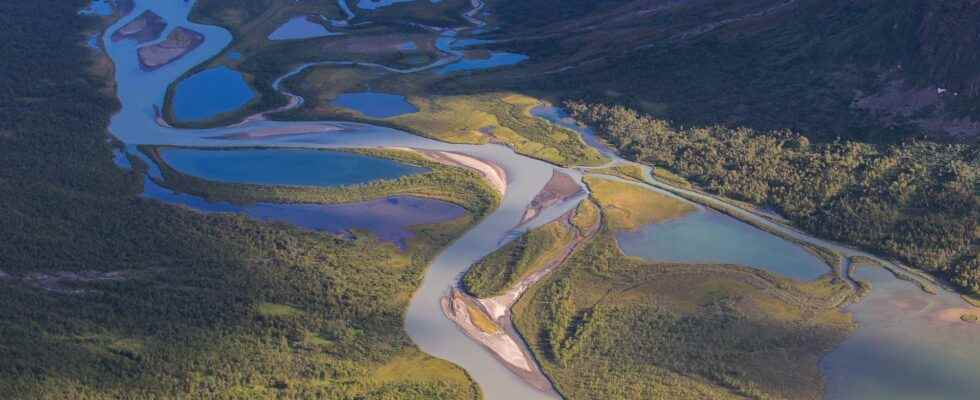You will also be interested
[EN VIDÉO] Rivers: the world seen by Thomas Pesquet Flowing water: this is a spectacle you never tire of, even during a mission to the International Space Station. Astronaut Thomas Pesquet, during his stay, was commissioned to make a number of images, which he did on several themes. Here are rivers well known to Earthlings but admired as a sight impossible to imagine from the ground.
Rivers and rivers are generally bordered by more or less large flood zones which are called “flood plains”, and which are regularly submerged during flooding episodes. However, these areas are very often developed by humans to make agricultural land or habitable areas. Developments, such as dykes, made to prevent water from penetrating these lands, disconnect the floodplains from the river network. However, this link is necessary for the good health of the river and its ecosystem.
Floodplains help reduce nitrate pollution of rivers
Floodplains play a very important role. Regularly flooded, they mark a crucial interface between dry land and watercourses. This position makes them particularly important areas for the renewal of nutrients and the biodiversity. They also have the richest ecosystems that exist on Earth.
One of the major contributions of floodplains is to reduce thenitrogen present in rivers. This is demonstrated by a new study on the Danube river system, which is published in Science of the Total Environment.
The Danube has the distinction of having the second largest watershed from Europe. However, between 70 and 80% of its floodplains have been disconnected from the river network or turned into agricultural land in recent decades. This functional change in the dynamics of the river has had important repercussions.
In this study, the researchers put light the phenomenal amount of nitrogen entering the waters of the Danube each year: 500,000 tons, mostly in the form of nitrates ; 44% would come from agriculture installed in the catchment area and 30% from cities. If two thirds reach the Black Sea, only one third (i.e. 160,000 tonnes) is degraded within the waters of the river.
There is an urgent need to restore the floodplains to their functions
However, we know that an excessive quantity of nitrates in water strongly degrades its quality and negatively impacts river ecosystems, but also marine ones. The tons of nitrates pouring into the seas and oceans via the rivers are indeed responsible for a eutrophication of coastal environmentscausing changes in physico-chemical balances, a proliferation of algae and major malfunctions within marine ecosystems.
It remained to quantify the impact of the disconnection of the floodplains on the retention of nitrates in the water of the river. The results of the study show that active floodplains normally contribute to retain a significant part of nitrates in their soils, even if the majority is degraded in the water system by the action of bacteria or consumption by plankton. Currently, 33,200 tonnes of nitrates are retained in the floodplains of the Danube, or 6.5% of the total contribution. For the researchers, it would be possible to reach more than 14% if 1,300 km2 floodplains were reconnected to the river network.
The study thus highlights the beneficial effect of floodplains on the water quality of rivers and rivers as well as the need to keep them active by restoring their functions degraded by anthropic developments. Actions in this direction would also promote the maintenance of the rich biodiversity associated with these wet area.
Interested in what you just read?
